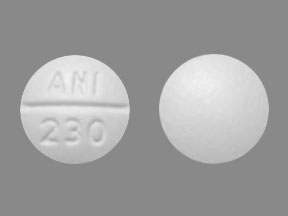Propafenone Disease Interactions
There are 7 disease interactions with propafenone.
- bronchospastic disorder
- Cardiac dysfunction
- AV node dysfunction
- Electrolyte imbalance
- (+) ANA titer
- Liver disease
- Renal dysfunction
Propafenone (applies to propafenone) bronchospastic disorder
Major Potential Hazard, Moderate plausibility. Applicable conditions: Asthma, Chronic Obstructive Pulmonary Disease
The use of propafenone is contraindicated in patients with bronchospastic disorders or severe obstructive pulmonary disease. Propafenone has beta-adrenergic blocking properties.
Propafenone (applies to propafenone) cardiac dysfunction
Major Potential Hazard, High plausibility. Applicable conditions: Heart Block, Hypotension, Congestive Heart Failure
The use of propafenone is contraindicated in patients with uncontrolled congestive heart failure, cardiogenic shock, bradycardia, or marked hypotension. Propafenone can exacerbate congestive heart failure by beta blockade of sympathetic stimulation necessary for circulatory support. Propafenone also has negative inotropic activity that can depress cardiac output and cardiac index.
Propafenone (applies to propafenone) sinus (applies to propafenone) AV node dysfunction
Major Potential Hazard, High plausibility. Applicable conditions: Heart Block
The use of propafenone is contraindicated in patients with conduction disorders such as second- or third-degree AV block, right bundle-branch block when associated with a left hemiblock(bifascicular block), sick sinus syndrome, or bradycardia-tachycardia syndrome in the absence of a functional artificial pacemaker.
Antiarrhythmics (applies to propafenone) electrolyte imbalance
Moderate Potential Hazard, High plausibility. Applicable conditions: Hypokalemia, Hyperkalemia, Magnesium Imbalance
Electrolyte imbalance can alter the therapeutic effectiveness of antiarrhythmic agents. Hypokalemia and hypomagnesemia can reduce the effectiveness of antiarrhythmic agents. In some cases, these disorders can exaggerate the degree of QTc prolongation and increase the potential for torsade de pointes. Hyperkalemia can potentiate the toxic effects of antiarrhythmic agents. Electrolyte imbalance should be corrected prior to initiating antiarrhythmic therapy. Clinical monitoring of cardiac function and electrolyte concentrations is recommended.
Propafenone (applies to propafenone) (+) ANA titer
Moderate Potential Hazard, Moderate plausibility. Applicable conditions: Lupus Erythematosus
Reversible (+) ANA titers have been reported during administration of propafenone. Therapy with propafenone should be administered cautiously in patients with established systemic lupus erythematosus (SLE). Clinical monitoring, including ANA titers, is recommended. Patients without a previous history of (+) ANA titer or SLE who develop a (+) ANA while receiving propafenone should be evaluated and, if ANA titers persist or worsen, discontinuation of therapy should be considered.
Propafenone (applies to propafenone) liver disease
Moderate Potential Hazard, High plausibility.
Propafenone is extensively metabolized by the liver. The bioavailability of propafenone in patients with normal hepatic function is approximately 3% to 40%, but increases to approximately 70% in patients with severe hepatic impairment. Therapy with propafenone should be administered cautiously and the dosage reduced to 20% to 30% of that given patients with normal hepatic function. Clinical monitoring of cardiac function (ECG) and hepatic function is recommended.
Propafenone (applies to propafenone) renal dysfunction
Moderate Potential Hazard, Low plausibility.
Propafenone is partially eliminated by the kidney and approximately 50% of its metabolites are excreted in the urine. Therapy with propafenone should be administered cautiously in patients with renal impairment, monitoring for signs of overdosage.
Switch to professional interaction data
Propafenone drug interactions
There are 429 drug interactions with propafenone.
Propafenone alcohol/food interactions
There is 1 alcohol/food interaction with propafenone.
More about propafenone
- propafenone consumer information
- Check interactions
- Compare alternatives
- Pricing & coupons
- Reviews (71)
- Drug images
- Side effects
- Dosage information
- During pregnancy
- Drug class: group I antiarrhythmics
- Breastfeeding
- En español
Related treatment guides
Drug Interaction Classification
| Highly clinically significant. Avoid combinations; the risk of the interaction outweighs the benefit. | |
| Moderately clinically significant. Usually avoid combinations; use it only under special circumstances. | |
| Minimally clinically significant. Minimize risk; assess risk and consider an alternative drug, take steps to circumvent the interaction risk and/or institute a monitoring plan. | |
| No interaction information available. |
See also:
Further information
Always consult your healthcare provider to ensure the information displayed on this page applies to your personal circumstances.


